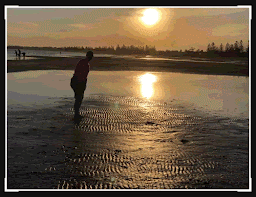The contrast between a decent photograph and an incredible one may be the couple of moments you spend altering it before you share it. These methods can rapidly support the nature of your photographs.
You can make these alters on a cell phone utilizing worked in instruments, similar to Apple's Photos application or Google Photos. There are, obviously, more top to bottom applications accessible for the two specialists and experts.
Recover Details From Shadows and Highlights
Features are the lightest regions of your picture, while shadows are the most obscure. In the event that both of these are unadulterated white or unadulterated dark, these territories are finished or underexposed. Luckily, you can attempt to hook back some detail from these regions utilizing the "Features" and "Shadows" sliders.
The configuration you used to catch your picture will influence how much detail you can recoup. In the event that you shot a picture in RAW on a computerized SLR or mirrorless camera, or you have a cell phone application that can catch RAW photos, you'll have much more to work with.
Nonetheless, in case you're utilizing a packed picture position, as JPEG, a significant part of the detail in the features and shadows is disposed of during the pressure procedure. A RAW record is a lot bigger in light of the fact that it holds the entirety of the information caught when you press the screen, including partitions that are undetectable to the natural eye without some altering.
Regardless of whether you're shooting in JPEG on a cell phone, you ought to have the option to recuperate some detail. The point here is to make a "level" picture, in which there are no finished or underexposed zones. By doing this, you'll lose differentiate, however that is alright on the grounds that you can include it back a while later.
To begin with, decrease the "Features" slider until you see some detail come back to the lightest regions of your picture. At that point, increment the "Shadows" slider to recoup some detail in the most obscure territories.
How far you go with both of these settings relies upon your picture, its arrangement, and the look you're attempting to accomplish.
You currently have a level picture with more unique range. You can now continuously include some difference once again into the picture utilizing the complexity slider. Go moderate, however—you would prefer not to lose any of the detail you simply recouped. The key is to locate the correct harmony between the dynamic range and differentiation.
You can utilize this method to fix over-or underexposed pictures by concentrating basically on the features or shadows, separately.
Straighten Your Photos (or Find Other Straight Lines)
On the off chance that you don't as of now fix your pictures, it's conceivable you've never seen they're lopsided. Shockingly, when you do begin to see this, it can immediately turn into a fixation. You can spare your mental stability by continually rectifying your pictures in post production before you share them.
The simplest method to fix a picture is to search for the skyline. In the event that your picture is of a scene or highlights the skyline in any noticeable manner (like a gathering representation taken outside), hold fast to the skyline at whatever point conceivable.
Obviously, there's a whole other world to fixing pictures than essentially coordinating the skyline.
Not all pictures include the skyline. In those cases, it's imperative to search for other straight lines you can utilize. For instance, in indoor shots, you may search for shafts or columns. Once in a while, however, you may have a picture with lines that weren't directly in the first place, for example, pillars in an old structure or a brought down fence post.
In these occasions, you'll have to utilize your best judgment to pick a noticeable straight line and cling to it. There are loads of components impacting everything here, including central length and your viewpoint when you made the effort. For instance, a picture of a high rise shot upward will probably include two joining lines that draw nearer close to the top.
You can get much more active by messing with viewpoint bending apparatuses. These permit you to physically contort a picture on the two tomahawks to get an ideal outcome.
You can likewise simply pick your lines astutely and go for it!
Crop Your Images for Better Composition
Most advanced cameras currently shoot in the scope of around 20 megapixels. This is sufficient to print a flawless photograph at around 18 x 12 crawls at 300 dpi. You can even generally print a bigger rendition at 200 dpi or lower. This implies regardless of whether you're printing pictures, you have an enormous region to play with to make yields and upgrade your arrangement in post.
It's consistently desirable over nail down the sythesis before you press the shade. Reconsidering before you discharge a shot will surely improve your photography. In any case, photography likewise includes understanding which transforms you can make to improve your pictures after you take them, and trimming is an amazing asset.
What you keep separate from a photograph can be similarly as significant as what you leave in. Zooming with your feet isn't generally conceivable, and not every person can convey a 400mm focal point in their back pocket. Try not to be hesitant to lose any diverting components that distract from the subject of your picture.
Keep in mind, there are no exacting standards with regards to photography. Investigation until you're content with the outcomes. Disregard the standard of thirds, or possibly do whatever it takes not to incline toward it a lot during your work process. Concentrate rather on making an arrangement that feels natural, paying little mind to where the matrix lines fall.
Expelling any diverting frontal area objects or unessential subtleties around the edge of a casing will attract the eye toward the subject the center. Be that as it may, you ought to likewise fight the temptation to forcefully focus your subjects. A great part of the time, an off kilter picture is more outwardly satisfying than a totally focused one. This is the reason narrative producers frequently position their subjects at the edge of the edge.
This is the reason driving lines—the lines in your picture that normally lead the eye a specific way—are significant while editing.
Correct White Balance for Better Colors
Most cameras and cell phones work admirably of nailing white parity the first run through. Obviously, no gadget is great. It's anything but difficult to utilize a manual white adjust and neglect to transform it. Here and there, conditions change rapidly, or contending light sources lose the white parity.
Various wellsprings of light make various temperatures of light, and this is reflected in the white equalization. A brilliant dusk projects a warm gleam, while a cloudy shot of a frigid mountain may seem cold and blue. Cylindrical bright lights cast a virus white gleam, while glowing lights in table lights are normally hotter.
On the off chance that the white parity is off, skin tones won't look right, nor will any white or ill defined situations in your picture. You can utilize this for your potential benefit to make hotter or colder scenes, yet here, we'll be concentrating on getting as near impartial white as could be expected under the circumstances.
The simplest method to do this is to expand the "Vibrance" slider. This should make even the bluntest hues in your picture stick out. You ought to likewise have the option to tell from this whether your picture is excessively warm or cold.
Attempt to find some kind of harmony between chilly (blue) and warm (yellow) by modifying the "Temperature" (or "Warmth" in certain editors) slider.
When you've found some kind of harmony among yellow and blue, direct your concentration toward green and fuchsia (pink). Most picture editors likewise have a "Color" slider you can use to find some kind of harmony among green and red. It's much simpler to get this privilege with the "Vibrance" expanded.
At the point when you've accomplished a decent white equalization, your picture should look unbiased. Whites ought to be white, and skin tones, ideally, will be as near ordinary as could reasonably be expected. It very well may be difficult to get skin tones right, considerably after you've balanced, especially if there's any hued lighting in the scene.
Simply make sure to decrease the "Vibrance" setting to something more sensible when you're set.
Boost Colors with Vibrance to Preserve Skin Tones
The "Vibrance" slider focuses on the bluntest hues in your picture without exaggerating the tones that are as of now immersed. You can utilize the "Immersion" slider to build the general measure of shading, yet this influences the whole picture.
The "Immersion" and "Vibrance" sliders in a photograph proofreader.
It's anything but difficult to exaggerate shading immersion and make a radioactive wreck of a picture. Skin conditions that are too immersed can make a subject look embittered. Imperfections, similar to spots or moles, can turn out to be excessively overstated.
Everything in a picture will begin to battle for consideration. You can utilize shading to lead the eye, yet you need to do so cautiously.
This is the place the "Vibrance" setting comes in. It resembles the "Immersion" slider, yet with preparing wheels. It's especially useful for rescuing hues in shadows, which will in general be dull because of underexposure.
Don’t Spend Big on Photo Editors
Once more, you can play out these alters directly on your cell phone in even the least difficult of photograph editors, incorporating the implicit devices on Android or iPhone
While Adobe Photoshop is as yet the undisputed work area photograph altering lord, there are a lot of options you can utilize that don't require a month to month expense.


















thank you for providing
ReplyDelete